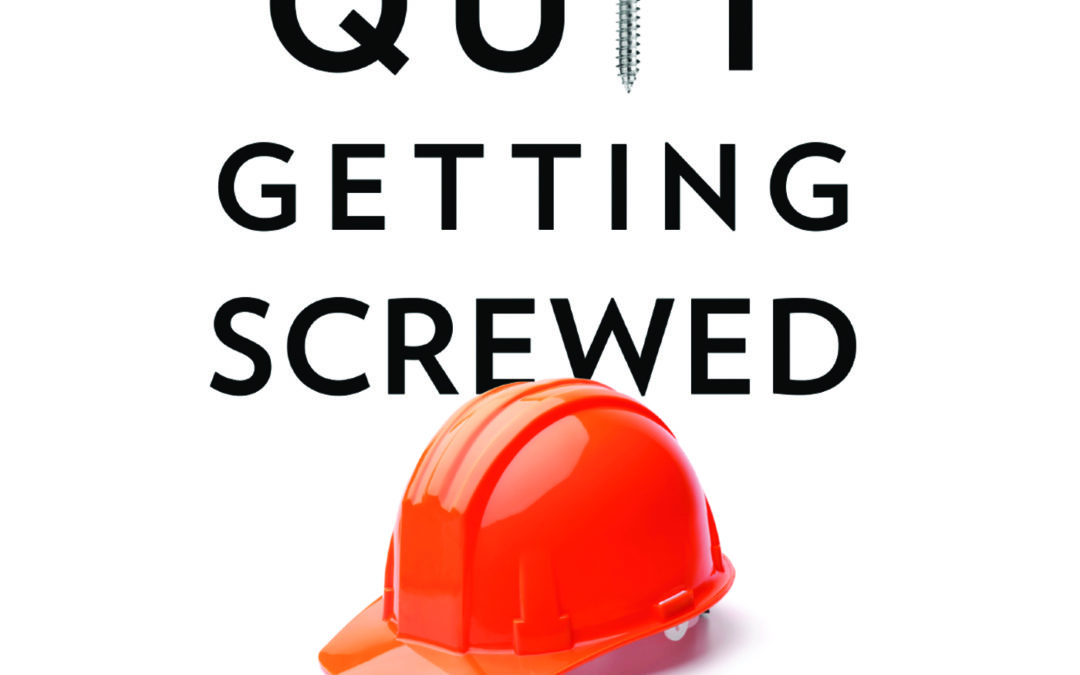Episode link: https://the-quit-getting-screwed-podcast.castos.com/episodes/episode-7-what-makes-a-contract
The contract is one of the most essential, and most misunderstood or overlooked elements of running a successful construction company. Many client disputes arise because of sneaky contractual provisions buried in complicated legalese, making them difficult to parse out for the untrained eye. In episode 7 of The Quit Getting Screwed Podcast, Karalynn goes solo to dive into the dirty details of what comprises the contract, and what problem areas you, the contractor, need to stay on alert for. Her nearly 18 years’ experience in writing, reviewing, and negotiating construction contracts make Karalynn especially qualified to break down the contract for her listeners, and she does exactly that in this episode!
Karalynn begins the episode by addressing the question, “What amount justifies a contract,” which is a question that evidently many contractors have disagreeing answers to. Karalynn dives into the topic of the handshake agreement’s long-running history in the construction industry, and how those faith-based exchanges have unfortunately lost their shine. She suggests that no matter how small the spend of the project, contractors must have a written contract to back up and protect themselves legally. Even on projects being done for a friend, many contractors wind up in sticky situations because they were just aiming to, “help somebody out.” This is Karalynn’s first and most pressing reminder to her listeners.
The next big advice this construction contract guru has to offer is paramount for any contractor; ensure the contract you send to your client is explicitly clear about exactly what work you will be doing, and what work you will not be doing. Karalynn reminds her listeners, “Brene Brown has a saying; clear is kind. Right? And that goes for all transactions and all situations. I’m being clear with what’s expected, the work that will be done, and how much I will be paid.” This approach allows for clarity and understanding between the parties expected to sign the document and gives the contractor a paper trail safety net should your client have a change of heart. Your contract is a paper contention plan. Specifying exactly what you plan to do in your contract is essential, especially knowing that your bid is often not synonymous with the scope of work the client is putting forth. Clarity is everything when it comes to the work you do, and what you are to be paid for that work. Karalynn suggests, “Including what you’re going to be paid is the best thing you can do. Having something your client signs that they don’t understand or that you don’t understand isn’t going to turn out well for any party at the end of the day. So really take the time and make it clear.”
These fragments of advice and explanation on just scratch the surface of all of the absolutely integral information covered and broken down in this episode. Karalynn’s emphasis on her plain-English explanations make it all easy to understand and spell out exactly why the modern-day construction contract is such a tricky beast to conquer. After years of no negotiation, Karalynn has made it her personal mission to level the playing field for contractors across the globe by making this information more readily available, and easily accessible. She believes contractors deserve to develop their businesses and protect themselves and their hard-earned money in the process, and she is making that dream a reality every day.
This episode is a testament to her efforts. If you want to hear Karalynn’s thorough breakdown and buildup of the construction contract, this is the episode for you. Make sure you tune in to Episode 7: What Makes a Contract and take advantage of this free education.
The Quit Getting Screwed podcast features incredible, experienced industry professionals, and asks them to share what they’ve learned along the way to help you run a better business. If you want more information about what we do, or a full transcript of the episode, you can visit thecromeenslawfirm.com. We’re also on Facebook, LinkedIn, and Instagram, and the book is available on Amazon.

